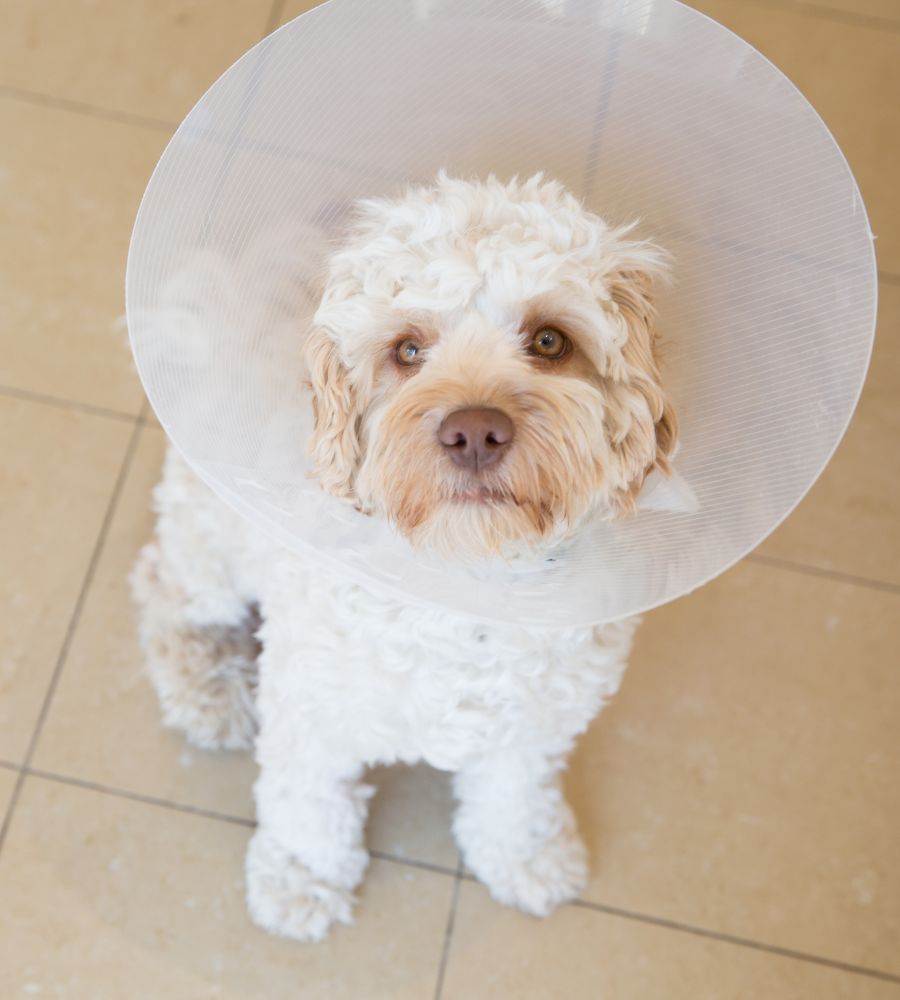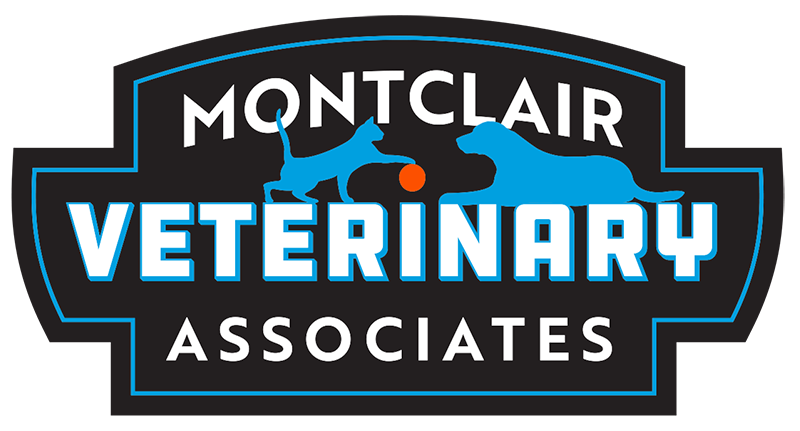Pet Spaying & Neutering in Montclair, NJ
Making the decision to spay or neuter your pet represents one of the most important choices you’ll make for their long-term health and well-being, offering significant medical benefits while helping control pet overpopulation. These routine surgical procedures not only prevent unwanted pregnancies but also reduce the risk of certain cancers, eliminate heat cycles, and often improve behavioral issues in both dogs and cats.
Understanding the timing, benefits, and process of spaying and neutering helps pet parents make informed decisions about their companion’s reproductive health. We work closely with families throughout Montclair to determine the optimal timing for these procedures based on each pet’s individual needs, breed considerations, and health status.

Health Benefits of Spaying and Neutering Your Pet
Our veterinary services include comprehensive spaying and neutering procedures designed to provide maximum health benefits for your pet. Spaying female pets eliminates the risk of ovarian and uterine cancers while significantly reducing the likelihood of mammary tumors when performed before the first heat cycle.
Neutering male pets prevents testicular cancer and reduces the risk of prostate problems later in life. These procedures also eliminate hormone-driven behaviors such as marking territory, roaming, and aggressive tendencies, making pets more content and easier to manage at home.
The surgical removal of reproductive organs prevents pyometra, a life-threatening uterine infection common in unspayed female dogs and cats. This condition requires emergency surgery and can be fatal if left untreated, making preventive spaying a crucial health decision.
Optimal Timing for Spaying and Neutering Procedures
Traditional recommendations suggest spaying and neutering pets between four and six months of age, before sexual maturity occurs. However, current research indicates timing may vary based on breed size, individual development, and specific health considerations unique to each pet.
Large breed dogs may benefit from waiting until growth plates close, typically between 12 and 18 months of age, to reduce the risk of orthopedic issues. Smaller breeds often can be safely spayed or neutered at the traditional younger age without concerns about bone development.
Some dog breeds require specialized care during these procedures due to their unique anatomical features or breed-related health considerations. We evaluate each pet individually to determine the most appropriate timing for their specific needs.
Female pets benefit most from spaying before their first heat cycle, which typically occurs between six and twelve months of age. Spaying after the first heat cycle still provides significant health benefit,s but may not offer the same level of mammary tumor prevention.
What to Expect During the Surgical Process
Pre-surgical examination and bloodwork ensure your pet is healthy enough for anesthesia and surgery. We perform comprehensive health assessments and may recommend additional testing based on your pet’s age, breed, or existing health conditions.
The surgical procedure involves general anesthesia to ensure your pet remains comfortable and pain-free throughout the operation. Spaying requires an abdominal incision to remove the ovaries and uterus, while neutering involves removing the testicles through a small incision near the scrotum.
Modern anesthetic protocols and pain management techniques keep pets comfortable during and after surgery. We monitor vital signs continuously during the procedure and provide appropriate pain medication to ensure a smooth recovery process.
Most pets can return home the same day as their surgery, though some may require overnight observation depending on their individual response to anesthesia and the complexity of their procedure.
Age-Related Considerations for Spaying and Neutering
Puppy and kitten spaying or neutering requires special attention to anesthetic protocols and surgical techniques appropriate for smaller body sizes. Young animals typically recover more quickly from surgery and experience fewer complications compared to older pets.
Adult pets can still benefit significantly from spaying and neutering, though older animals may require additional pre-surgical testing and monitoring. We assess each pet’s overall health status to ensure they can safely undergo the procedure regardless of age.
Senior pets may require modified surgical techniques and extended recovery periods, but can still experience health benefits from these procedures when performed by experienced veterinary professionals.

Behavioral Changes Following Surgery
Many pet parents notice positive behavioral changes following spaying and neutering procedures. Male pets often show reduced aggression, decreased marking behavior, and less tendency to roam in search of mates.
Female pets no longer experience heat cycles, eliminating the associated behavioral changes such as increased vocalization, restlessness, and attraction to male animals. This creates a more predictable and manageable living situation for pet families.
While spaying and neutering can help with certain behavioral issues, these procedures are not guaranteed solutions for all behavioral problems. Proper training and socialization remain important components of raising well-behaved pets.
Cost Considerations and Long-Term Value
Spaying and neutering represent cost-effective investments in your pet's long-term health care. The upfront surgical cost is typically much less than treating reproductive-related health problems that may develop later in life.
Prevention of conditions such as pyometra, mammary tumors, and prostate problems can save thousands of dollars in emergency veterinary treatment costs. Many pet insurance policies cover spaying and neutering procedures, making these important surgeries more affordable
Recovery Environment and Home Preparation
Creating a quiet, comfortable recovery space helps your pet heal properly following surgery. This area should be easily cleanable and away from other pets or small children who might encourage excessive activity during the healing period.
Room temperature monitoring and comfortable bedding support optimal recovery conditions. Pets may feel slightly cooler than normal following anesthesia, making warm, soft bedding particularly important during the first few days.
Contact Montclair Veterinary Associates for Your Pet’s Spaying or Neutering Needs
Dr. Cory Waxman brings unique expertise to reproductive procedures, having conducted extensive research for the “Noah’s Ark” Project at Northwestern University and the University of Pennsylvania, where he developed artificial reproduction methods for endangered canine and feline species. This specialized background in reproductive biology enhances his approach to routine spaying and neutering procedures.
Our practice has been serving pets throughout Northern NJ since 2011, building a reputation for excellent surgical outcomes and compassionate care. Schedule a consultation to discuss the optimal timing for your pet’s spaying or neutering procedure and learn more about our comprehensive pre-surgical evaluation process. We’re committed to providing the highest quality surgical care to help your beloved companion live a long, healthy life.
Pet Spaying & Neutering FAQ
What age is best to have my pet spayed or neutered?
Most veterinarians recommend spay neuter procedures around 5 to 6 months of age, before pets reach sexual maturity. Most cats and small-breed dogs are ready by this time, but larger dogs or other animals may require a slightly different timeline. Your veterinary team will evaluate your pet’s health and development to determine the best time, ensuring the procedure delivers full health benefits while minimizing risk.
What does spay surgery involve for female animals?
Spay surgery involve the removal of the ovaries and usually the uterus in female animals, including female cats and female dogs. It’s performed under general anesthesia as a major surgical procedure. The surgery prevents unwanted pregnancies and reduces the risk of breast cancer and uterine infections. Afterward, pet owners must monitor the incision site and limit their pet’s activity for seven to ten days to support healing.
Are there affordable options for spaying and neutering?
Yes, many clinics offer low cost spay and neuter services without sacrificing safety or veterinary care standards. At Montclair Veterinary Associates, we believe all pets deserve access to quality surgery and recovery support. Affordable options help support animal welfare and prevent pet overpopulation, making it easier for families to do the right thing for their animals and the community.
How does neutering benefit male animals?
Neuter surgery for male animals, such as male cats, removes the testicles to prevent reproduction and reduce unwanted behaviors like roaming and marking territory. It also lowers the risk of testicular cancer and some prostate issues. This surgical procedure is safe, performed under general anesthesia, and offers both behavioral and long-term health benefits for your pet when performed at the right age.
What kind of care is required after the procedure?
After surgery, pets need rest and gentle monitoring for seven to ten days. Keep your pet calm, provide a small meal that evening, and check the incision site daily for redness or fluid buildup. For cats, ensure they have easy access to a clean litter box. Avoid bathing and strenuous activity during recovery. If you notice anything unusual, contact your veterinary care provider promptly.
